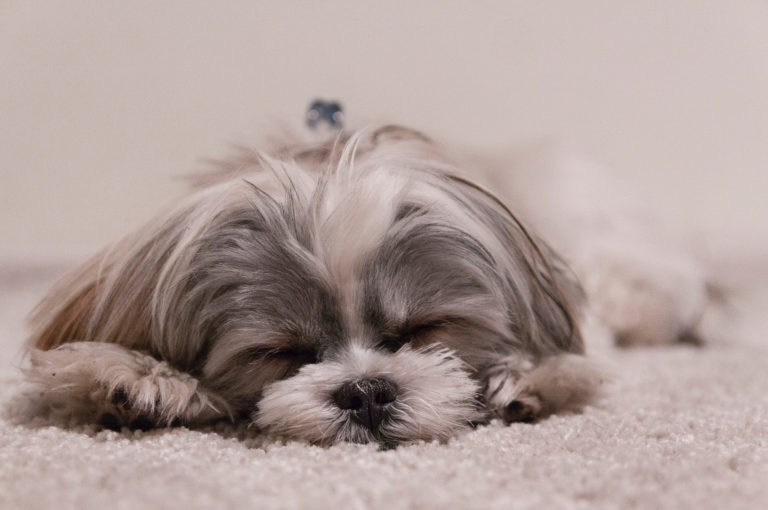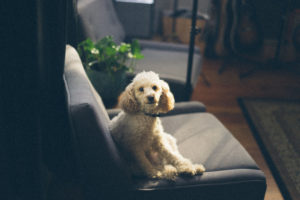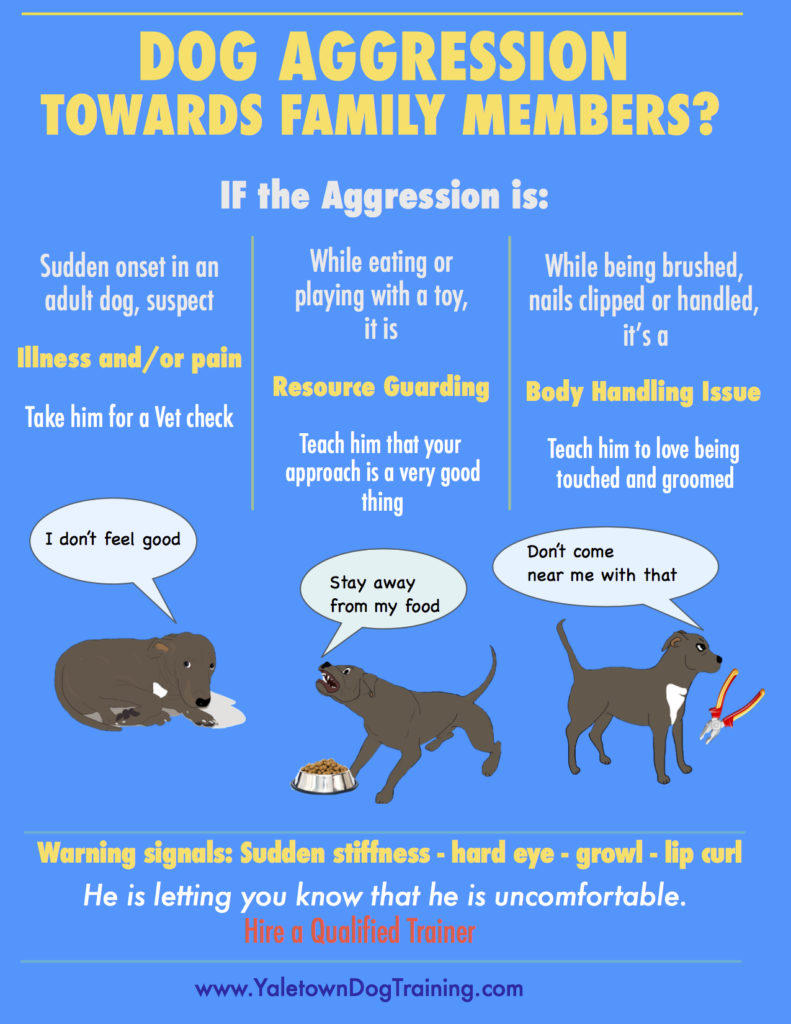
Blog
Understanding Dog Aggression Towards Family
 When your own dog growls at you it can feel awful. But try not to take it personally, it is the only way he has of telling you that something is making him uncomfortable or nervous. Aggression is a normal canine behaviour. It is normal in all animals. Dogs use aggression to defend themselves from a perceived threat and to protect their valued resources. They also use aggression when they are fearful to try to get the thing that scares them to move away.
When your own dog growls at you it can feel awful. But try not to take it personally, it is the only way he has of telling you that something is making him uncomfortable or nervous. Aggression is a normal canine behaviour. It is normal in all animals. Dogs use aggression to defend themselves from a perceived threat and to protect their valued resources. They also use aggression when they are fearful to try to get the thing that scares them to move away.
Most dogs give off warning signals before they actually bite. These warning signals are good. The dog is telling the person that he feels uncomfortable and to please back away. Respect this warning and maintain distance. It is very, very important not to punish a dog for giving a warning signal.
Dogs punished for growling or other warning signals may not growl next time. Instead they may go directly to a bite.
Common warning signals include: Hard eye, growling, snarling, snapping and biting. Dogs with food guarding issues may also exhibit the following warning signals: Cessation of eating (freeze) and accelerated eating in addition to the above.
The 3 most common reasons for a dog to show aggression towards family members are:
- Illness and /or pain.
- Resource Guarding.
- Body Handling Issues.
Illness and/or Pain: Consult your veterinarian if an older dog who has never shown signs of aggression before, starts to be aggressive. The dog most likely is in pain and needs to have a check-up to determine the cause.
Resource Guarding: This occurs because some dogs have retained the guarding instinct from their wolf ancestors. Dogs may guard food, locations, people or other objects such as toys or even unusual items such as kleenex. It is important to understand that resource guarding has nothing to do with the dog trying to be dominant over you. They simply have a strong inborn instinct to guard. A professional trainer can teach a dog to enjoy having things taken from him. Until this has been taught, feed your dog in a separate area and do not allow anyone to go near him when he is eating. Remove the food bowl at non-meal times as some dogs guard an empty bowl.
Make a list of items that he has guarded and be careful of controlling access to those things. Never try to forcefully remove something from a dog, as this can result in a bite. If your dog grabs something that is not dangerous, simply ignore him. If he grabs something that is either dangerous or valuable, go to the fridge and get a handful of tasty food. Throw the food far away from where the dog is with the guarded object. When he goes to eat the food calmly pick up the guarded item.
If your dog guards food or items put him in a crate or in another room if children come to visit. There can be tragic consequences if a child drops a piece of food and goes to grab it at the same time as the dog. Do this even if you have completed the training and you can safely remove items from your dog. Consider him always a risk of guarding around children and visitors.
Location Guarding: Some dogs have an instinct to guard where they are resting. Dogs may growl or snap when someone approaches them and/or tries to get them to move off the couch or bed.
A trainer will be able to teach your dog to happily vacate locations, or to love having you sit next to him. When you have visitors, especially children, do not allow your dog to rest on any furniture as he may guard visitors. Never force your dog off of furniture that he is guarding as this may result in a bite.
Sleeping Dogs: Some dogs snap and bite if they are suddenly awoken from sleep. If your dog does this, do not allow him to sleep in your bed and do not touch him when he is sleeping. If you need to wake your dog, call him to you instead of touching him.
Body Handling Issues: The main reason that dogs growl or bite when touched is that were not handled and taught as puppies that it is ok when humans touch them. Some dogs will be aggressive when someone tries to touch their paws or ears, others are afraid when a person grabs their collar or tries to groom them.
A qualified trainer will be able to teach your dog to enjoy being touched and handled. Even dogs who need sedation for nail trims can learn to love having their nails cut.
Never allow a child to jump on, ride, pull a dog’s ears or tail, or generally bother a dog. Even the mildest mannered dogs can bite if pushed to their limit. Teach your children how to interact with dogs in a gentle, safe manner.
Consult a qualified trainer to help you with a dog that is showing aggression towards people. Make sure that your trainer knows how to modify fear and aggression in a safe force-free manner. Physical punishment or intimidation should not be used as this can make the problem worse.

